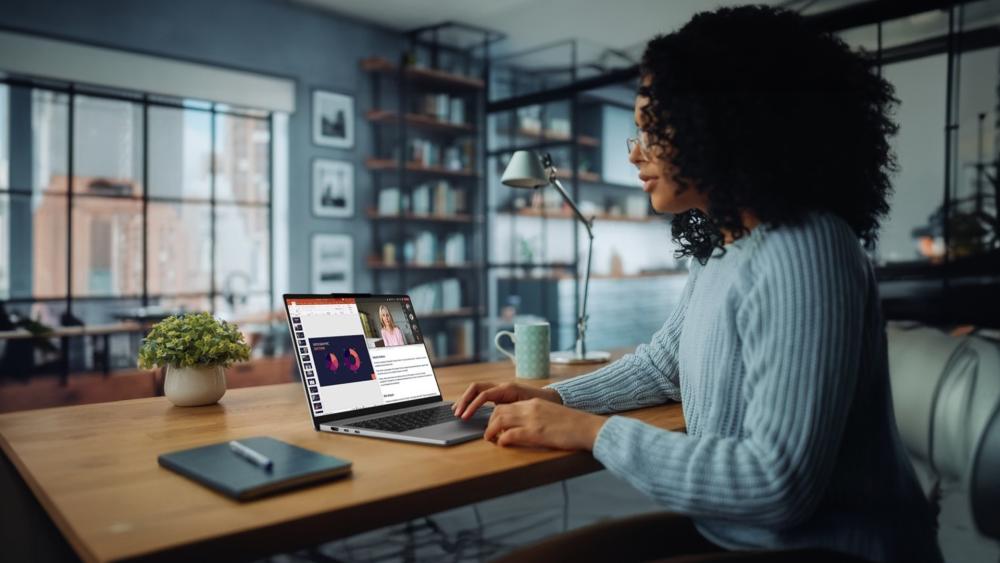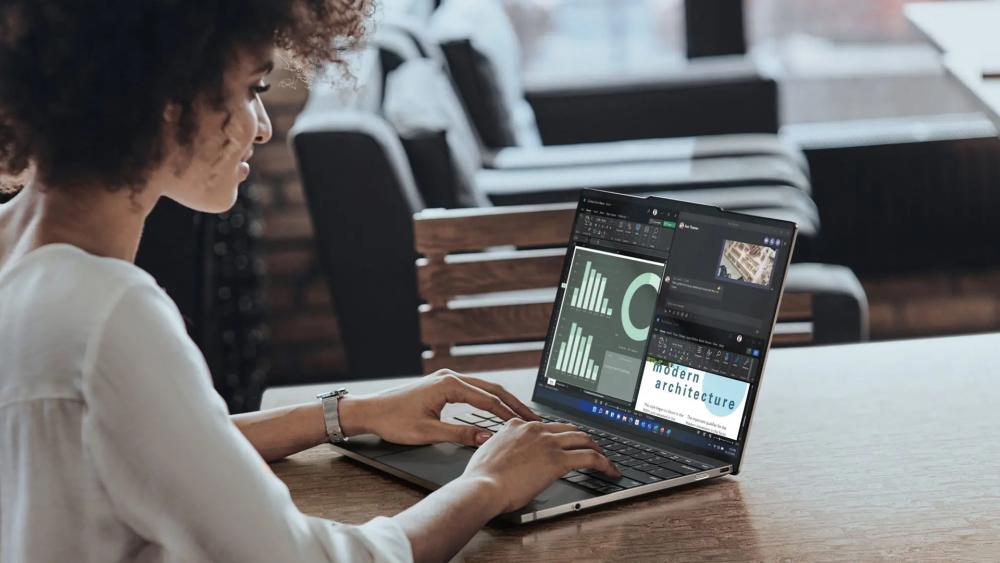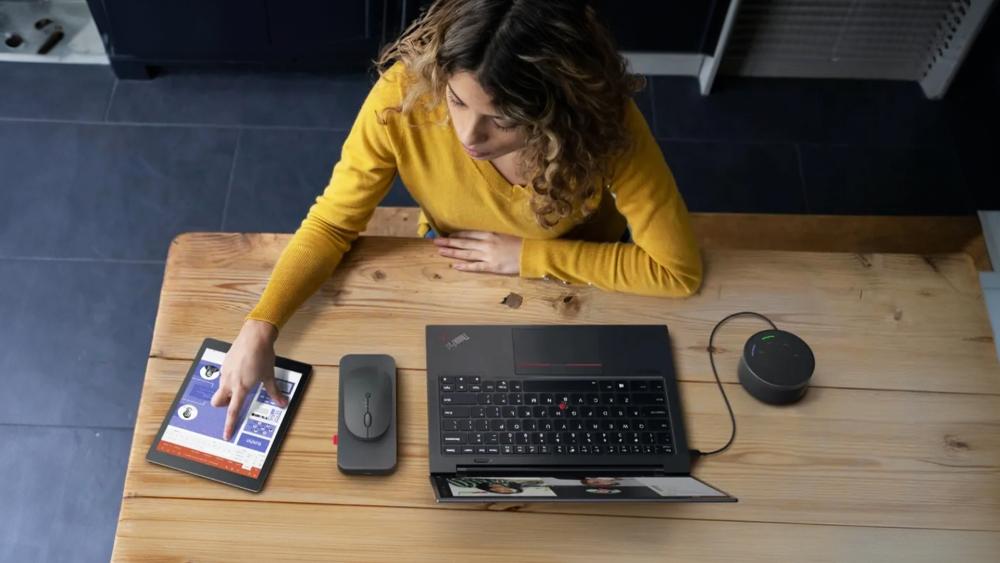POSTED: 08 September, 2025
Lenovo Laptop Buying Guide UK: Specs to Prioritise budget thresholds, model series breakdown
uying a new laptop can feel like stepping into a maze of confusing names, numbers, and price tags.
Lenovo is one of the most popular laptop brands in the UK, with ranges that cover everything from affordable student laptops to premium gaming and business machines. But which one is right for you?
This guide explains what to look for in a Lenovo laptop, how much you should expect to spend depending on your needs, and which series will suit you best. By the end, you’ll feel confident about choosing the right model and finding the best Lenovo laptops in the UK for your lifestyle and budget.
Your Guide to Finding the Perfect Lenovo Laptop

Step 1: Get Clear on What You Need
Before you start scrolling through endless listings, it helps to narrow things down. Two things matter most when choosing a laptop: your budget, your use case.
1. Your Budget
Let’s start with the big question: how much do you need to spend? The good news is that in today’s market, you don’t need to break the bank to get a solid Lenovo laptop. With £300–£500, you can get yourself a reliable laptop that’ll handle browsing, studying, and streaming without fuss.
Step up to around £800 and you’ll notice a big jump; faster processors, sharper screens, and sleeker builds that feel more premium.
And if you’re chasing cutting-edge power whether it’s a slim Ultrabook for work, a professional workstation, or a gaming beast, expect to spend £1,000–£1,500+. At that level, you’re getting top-tier features designed to go the distance.
2. Your Use Case
Here’s where many people go wrong: buying a laptop built for someone else’s lifestyle.
A Legion gaming laptop might look tempting, but if all you’re doing is looking up Netflix and checking emails, you’ll never use its full potential. On the flip side, a budget IdeaPad isn’t going to keep up if you’re editing videos or designing 3D models.
The trick is to be honest about what you’ll really do with your laptop. Schoolwork? Business presentations? Creative projects? Gaming marathons? Match your choice to your everyday life, and you’ll get better value and fewer frustrations.
How You’ll Use It (Purpose)
| Use Case | What to Prioritise |
| Basic tasks (web browsing, email, streaming) | Long battery life, Full HD screen, 8GB RAM |
| School or Work | Portable design, reliable keyboard, Good storage |
| Creative Work (photo/video editing, design) | Fast CPU, More RAM, high-res/OLED screen, discrete GPU |
| Gaming | High-performance CPU, RTX GPU, High-end display, strong cooling |
| Travel & Commuting | Lightweight build, slim design, all-day battery |
| Business & Enterprise | Security features, durability, long battery life |
| Family & Shared Use | Affordable, versatile, decent all-round performance |
| Engineering & Data Science | Workstation-level CPU & GPU, lots of RAM, reliability |
| Entertainment & Media | High-quality display, good speakers, decent battery |
| Hybrid / Mixed Use | Flexible 2-in-1 design, balanced specs |
Pairing your purpose with your budget helps you filter out dozens of models that don’t fit your needs. If you’re mainly working on essays or Zoom calls, there’s no need to spend £1,200 on a gaming laptop. Likewise, if you’re editing videos or running design software, a £400 Chromebook won’t cut it. Keep these two considerations in mind and you’ll find Lenovo feels made for you.
Step 2: Match Your Needs to the Right Lenovo Series
The next step is to look at Lenovo’s different series, each designed with a particular type of user in mind. Analysing the series helps you avoid paying for features you’ll never use, while also making sure you don’t end up with a laptop that can’t keep up with you.
- IdeaPad: Everyday laptops for students, families, and budget-conscious buyers. Great for web browsing, Office work, and streaming.
- Yoga: Sleek 2-in-1 laptops that double as tablets. Perfect for travellers, creatives, and hybrid workers who want both flexibility and power.
- ThinkPad: The classic business workhorse. Durable, secure, and built for professionals who type all day and need reliability on the go.
- Legion / LOQ: Gaming and high-performance machines. Packed with powerful processors, RTX graphics, and fast displays for gamers and creators.
- Chromebooks: Simple, affordable laptops that run on Chrome OS. Ideal for schools, children, and anyone who just needs the basics.
- ThinkBook: A modern blend of business and consumer design. Good for small businesses or professionals who want business features without the corporate look.
- ThinkPad P Series: Mobile workstations built for engineers, data scientists, and anyone running demanding professional software.
By comparing your use case against these series, you can quickly see which Lenovo laptop is designed for your world.
Step 3: Look at the Key Specs Inside Your Lenovo

The internal components of laptops like the processor, RAM, storage, graphics, and display are what truly shape your laptop’s performance and how enjoyable it will be to use it every day.
Processor (CPU)
The processor is one of the most important parts to get right. Lenovo laptops typically use either Intel or AMD chips, both of which are excellent.
Intel processors, especially the Core i5 and i7 ranges, are known for strong performance in everyday tasks and productivity, while AMD Ryzen processors often give you better value for money and excel at multitasking. If you only need a laptop for browsing, emails, and office work, an Intel Core i3 or Ryzen 3 will serve you well.
For students and professionals, the mid-range i5 or Ryzen 5 is the sweet spot, balancing performance with affordability. If your work involves gaming, video editing, or demanding software, moving up to an i7, i9, or Ryzen 7/9 will give you the power you need.
RAM (Memory)
The more RAM you have, the more smoothly your laptop can run multiple apps at the same time. 4GB is just enough for a Chromebook or very light use. For most users, 8GB is a comfortable starting point that will allow you to multitask between apps, browser tabs, and streaming without noticeable slowdown.
If you want extra headroom for business tasks, creative software, or gaming, 16GB is a wise investment. Professionals who work with video editing, 3D modelling, or other intensive programs may even benefit from 32GB or more.
Storage (SSD)
Almost all modern Lenovo laptops now use SSDs, or solid-state drives, and this is what you should look for. They are much quicker than old-style hard drives, meaning your laptop boots up in seconds and apps load instantly.
A 128GB SSD is fine for light use if most of your work is cloud-based, while 256GB or 512GB gives you plenty of space for documents, apps, and photos. If you’re a gamer or creator storing large projects and files, a 1TB SSD is the better option. External drives are always an option too, but prioritising an SSD will give you a noticeably smoother experience.
Graphics (GPU)
Most Lenovo laptops come with integrated graphics, which are built into the processor and are more than enough for browsing, office tasks, and streaming. However, if you’re planning to game, edit videos, or run design software, you’ll want a laptop with a dedicated graphics card, such as Nvidia’s RTX series.
Lenovo’s Legion and LOQ ranges are specifically built with this in mind, offering dedicated GPUs that can handle the latest games and professional workloads. It’s also worth remembering that your GPU, CPU, and RAM all work together. Having a top-tier graphics card won’t help if the rest of your system can’t keep up.
Display
The screen is one of the most overlooked features when buying a laptop, yet it’s the part you’ll interact with most. A Full HD (1080p) display is the standard and provides a clear, sharp picture that works well for everything from spreadsheets to movies.
Higher-end Lenovo models offer 2K, 4K, or even OLED displays with richer colours and deeper contrast, which are especially valuable for creatives and anyone who wants a premium viewing experience. For gamers, refresh rate is another key detail, with 120Hz or 144Hz displays offering smoother visuals than the standard 60Hz.
Step 4: Pay Attention to the Exterior

Now it’s time to think about the features on the outside. These are the parts you’ll notice every day; the screen you stare at, the weight you carry, the ports you plug into, and even the overall design that makes your laptop feel enjoyable to use.
Screen
Your screen is your window into everything you do, so getting it right matters. Larger displays like 14 inches and above are easier on the eyes, better for watching films, and more comfortable if you need to have two apps open side by side. The trade-off is that bigger screens mean heavier laptops and shorter battery life. Smaller laptops in the 11–13 inch range are more portable, but they can feel cramped and often come with lower resolution. For most UK buyers, 14–15 inches are the sweet spot between usability and portability.
Resolution also plays a big role. A Full HD (1920 x 1080) screen is perfectly fine for daily tasks, and it keeps costs down. If you’re into photo or video editing, or you just want sharper visuals, consider a 2K, 4K, or OLED display. These offer much richer colours and contrast, though they will consume more battery. And if you’re eyeing a 2-in-1 model like a Lenovo Yoga, a touchscreen becomes essential for sketching, presentations, or simply scrolling with your fingers.
Ports and Connectivity
USB-A is still common for everyday devices, while USB-C and Thunderbolt ports give you faster data speeds and the ability to connect to modern monitors or docks. HDMI is a must if you want to plug into TVs or projectors, while Ethernet ports are handy for fast, stable internet connections. That said, most people get by with a couple of USB ports and HDMI, since Wi-Fi and Bluetooth cover much of the rest. Think about what you plug in regularly an external monitor, mouse, or storage drive and make sure your Lenovo model supports it.
Weight and Portability
If you’re a commuter, student, or frequent traveller, carrying your laptop all day can get tiring. Lenovo offers plenty of lightweight models, from the Yoga Slim to the ThinkPad X1 Carbon, which weigh little more than a tablet but still pack impressive power. The trade-off with ultralight laptops is that they often have fewer ports and less room for upgrades. They may also use smaller SSDs to save on space. If you’re mainly working at a desk, a heavier model isn’t a problem, but if portability matters, it’s worth paying extra for a lighter build.
Battery Life
Battery life is one of the most practical features to consider. A laptop that dies halfway through your lecture or commute won’t be much use. Chromebooks and IdeaPads often stretch 10–12 hours, making them perfect for school or everyday browsing. ThinkPads and Yoga models also perform well, usually lasting 8–12 hours depending on usage. Gaming laptops, on the other hand, typically manage 5–7 hours because of their high-performance components. The key question is simple: will you mostly use your laptop plugged in at a desk, or do you need all-day power away from the socket?
Design and Build
Finally, don’t underestimate design. It might not affect raw performance, but it does impact your experience. Lenovo offers everything from the minimalist, professional look of a ThinkPad to the sleek metal finish of a Yoga or the bold gamer aesthetic of a Legion. Design also includes practical elements like hinge quality, keyboard comfort, and trackpad responsiveness. Since you’ll be spending hours with your laptop, choose one that feels enjoyable to use and looks right for your style.
Step 5: Make Your Final Decision
Here’s a complete decision table showing which laptops to consider including price ranges, why they’re worth it, when to avoid them, and what makes them the right fit.
| Use Case | Best Lenovo Picks | Budget Range (UK) | Why You Should Buy It | What Makes It the Right Choice |
| Basic Everyday Use / Family | Lenovo IdeaPad Slim 3, Lenovo Chromebook | Approx.£300–£500 | Affordable, lightweight, long battery life; perfect for essentials | Delivers smooth everyday performance without overspending |
| Students & School Work | IdeaPad Slim 5, | Approx. £500–£800 | Balanced performance and portability, reliable keyboard for note-taking, good battery life | Combines affordability with enough speed for multitasking and coursework |
| Business & Professional Work | ThinkPad T Series (T14/T15), | Approx. £800–£1,200 | Durable, secure, excellent keyboards, long battery life | Optimised for productivity, travel, and reliability with business security features |
| Creative Work | Yoga Pro 7/9i, ThinkPad P Series, IdeaPad Pro 5 | £1,000–£1,500 | OLED/high-resolution displays, powerful CPUs, discrete GPUs, 16GB+ RAM | Offers the colour accuracy, graphics power, and memory creatives need |
| Gaming | Legion 5 Pro, Legion Slim 7, LOQ 15 | Approx. £1,000–£1,500+ | Nvidia RTX graphics, high-refresh displays (120–240Hz), strong cooling | Brings desktop-class performance to competitive and AAA gaming |
| Travel & Commute | Yoga Slim 7i, ThinkPad X1 Carbon, Yoga 2-in-1 | Approx. £800–£1,200 | Ultra-lightweight, slim, with excellent battery life | Designed for portability without sacrificing everyday performance |
Step 6: Don’t Forget the Extras

So, you’ve matched your budget, chosen your Lenovo series, analysed the specs and design, and even narrowed it down to the right model. Before you hit “buy”, there are a few final considerations that are just as important for making the most of your laptop.
Upgradability
Not all laptops are locked down; some Lenovo models, particularly ThinkPads and Legions, allow you to expand the RAM or storage later. This can be a smart move if you’re on a budget now but expect your needs to grow in the future. For example, a laptop with 8GB RAM might be enough today, but having the option to upgrade to 16GB later will extend its lifespan and keep it running smoothly as software becomes more demanding. If you like the idea of future-proofing your laptop, check whether the model you’re considering has upgrade-friendly slots before buying.
| In case you run into any problems with your device, check out our full guide on Lenovo laptop troubleshooting in the UK. |
Warranty & Support
A laptop isn’t just a short-term gadget; it’s an investment you’ll use every day. That’s why warranty and support matter. Box.co.uk provides at least 1 year of warranty on all the products and gives the reassurance of local support, clear return policies, and expert advice if something goes wrong. Knowing that help is there when you need it takes the stress out of ownership and gives you peace of mind, especially for professionals and students who can’t afford downtime.
Accessories to Pair with Your Lenovo
The right accessories can transform your laptop experience from “good” to “great”.
- External Monitor: Perfect for creating a desktop-like setup at home.
- Laptop Bag or Backpack: Essential for travel and commuting. A padded case protects your laptop from knocks and scratches, while keeping everything organised.
- Wireless Mouse: Trackpads are fine for quick browsing, but for productivity or gaming, a mouse gives you more comfort, precision, and speed.
- External Storage Drive: Even if you have a large SSD, having an external drive is smart for backups, storing media files, or transferring projects quickly.
- Docking Station or USB Hub: If you plan to connect multiple devices like monitors, keyboards, hard drives, a docking station expands your ports and keeps your setup tidy.
- Headset or External Speakers: For video calls, streaming, or gaming, better audio equipment will massively improve your experience compared to built-in laptop speakers.
Conclusion
Buying a Lenovo laptop doesn’t have to feel overwhelming. By starting with your budget and use case, narrowing down to the right series, and then checking the specs, design, and extras, you’ll quickly find the model that fits your life perfectly. Whether you choose based on profession or gaming, there’s a Lenovo that matches your needs; from an affordable IdeaPad for studying, to a rugged ThinkPad for business, a stylish Yoga for hybrid work, or a powerful Legion for gaming.
Not sure which style suits you best? A quick look at a ThinkPad vs Yoga comparison can help highlight the differences in design, flexibility, and performance.
Ready to take the next step? Explore the full range and find your perfect Lenovo laptop today at Box.co.uk.